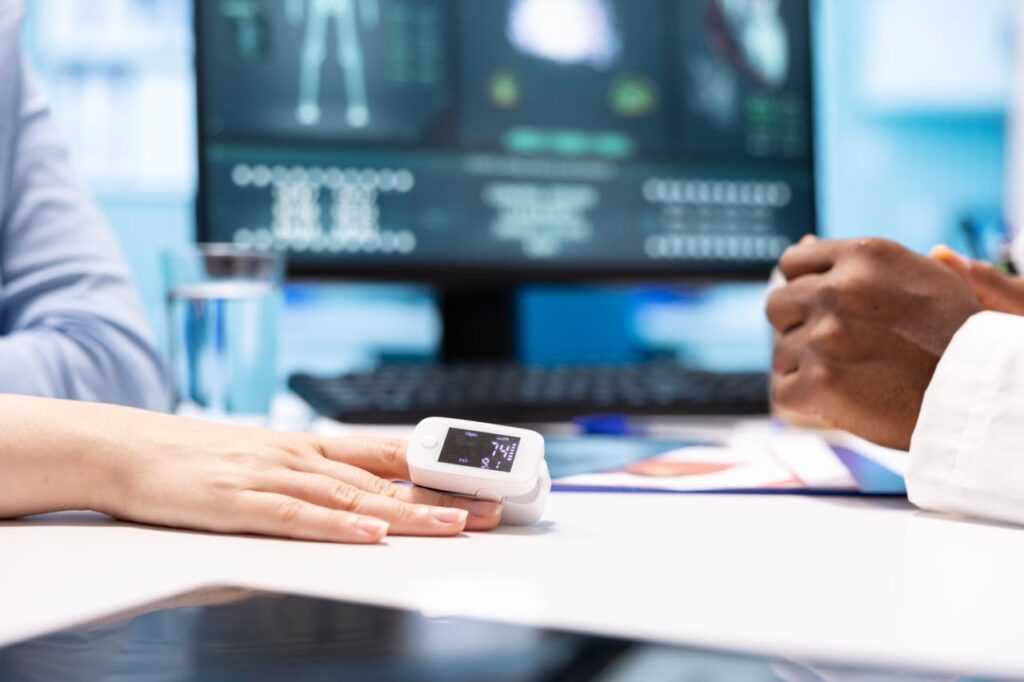The Remote Patient Monitoring (RPM) platforms have become a pillar in the development of digital healthcare. These systems enable clinicians to monitor health vital signs of a patient beyond the conventional clinical settings. Through connected devices and cloud-based systems, RPM assures that patient data is gathered in real-time and securely sent to healthcare providers so that timely intervention and improved chronic disease management become possible.
The rising toll of chronic illnesses, such as hypertension, diabetes, and heart disease, has generated urgency in the search for more efficient, scalable, and lower-cost models of care. RPM neatly solves this requirement by taking care of the patients in their homes, rather than limiting it to the clinic.
How RPM Platforms Work
Remote Patient Monitoring systems are commonly connected with different medical devices – blood pressure devices, glucose meters, heart rate, pulse oximetry, and digital weight scales. Implanted in the body, these gadgets automatically gather crucial health-related information and transmit to some centralized system.
This data is accessible to the clinicians via a dashboard that indicates abnormalities, shows trends, and enables one to drill down into the condition of a patient. Mobile applications are also provided by some RPM platforms to increase patient engagement and adherence. Such features as automated reminders, education materials, and two-way communication tools will keep patients in touch with their care team.
They are also likely to be integrated with Electronic Health Records (EHRs) in order to create a smooth information flow throughout all contacts of healthcare.
Benefits for Providers and Patients
To healthcare providers, RPM presents a scalable system of monitoring more patients without physically overworking. It helps in proactive care as the health-related issues can be recognized beforehand and can save a lot of hospitalization and emergency visits.
Instead, the patients will enjoy better convenience and peace of mind. They no longer have to visit their clinics regularly to have routine check-ups. Their well-being is tracked constantly, and they receive an alert when something is amiss. This results in increased compliance with treatment regimens and the general improvement of outcomes.
Another crucial role of RPM is that it enhances patient engagement and education. Having the ability to see personal health trends enables people to become serious about their condition and adherent to prescribed treatment courses.
RPM’s Role in Preventive Care
The healthcare sector is also quickly moving away from or reacting to treatment to preventive healthcare. RPM is a key enabler of this transformation. It enables medical professionals to determine the red flags in advance and be able to intervene before the situation deteriorates.
An example would be when a heart failure patient experiences a sudden gain in weight in just a matter of days; this may be an indication that the patient is retaining fluid and may be headed to a crisis. This change can be recognized in real-time by an RPM platform and thereby addressed before hospitalization is required. Such preventive care is not only cheaper but also leads to better long-term outcomes and also goes a long way in easing the burden on the healthcare system.
Challenges and Limitations
Despite its potential, Remote Patient Monitoring does have limitations. One of the biggest challenges is patient adoption. Most non-technological people/seniors find it difficult to use the devices or work around the applications. These patients have the ability to disengage rather quickly unless they are properly onboarded and supported.
On the clinical end, it can be intimidating to handle the data flow. RPM platforms create huge amounts of data that must be sifted, prioritized, and followed up. Clinicians can develop data fatigue when there are no strong triage systems or automatized alerts.
Regulatory and reimbursement issues also pose barriers. Although Medicare is not the only insurance company that has started reimbursing RPM services, the coverage may vary, and this makes the implementation rather risky to some providers. The aspects of data privacy also should not be overlooked, as well as the necessity for platforms to be HIPAA-compliant and resistant to breaching.
The Future of RPM Platforms
Remote Patient Monitoring is destined to become smarter and more automatized in the future, with more profound integration with other systems. AI and machine learning will make the RPM platforms shift towards becoming predictive rather than merely tracking devices, allowing them to anticipate health events before they occur. Algorithms would have a chance to study the past, climate conditions, and human behavior to highlight risks with impressive precision.
Conclusion
The Remote Patient Monitoring platforms are more than a mere fad or trend, as they embody a paradigm change in the experience and provision of healthcare. RPM facilitates prevention-focused care rather than treatment because it enables earlier interventions and better management of chronic conditions because it is based on constant, real-time monitoring. Although issues such as patient engagement, data management, and reimbursement still exist, the long-term benefits are substantially more than the obstacles.
With the growing availability of technology and RPM, it is going to be one of the main factors that will personalize, streamline, and sustain healthcare. As a provider aiming to update your care model or a patient wanting to have more control over your health, RPM is about to grant a new meaning to the concept of connected care.



